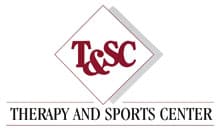Physical Training For Baseball
You can smell it in the grass, the dirt, and the leather of your new glove. Baseball is almost here. Maybe you should think about doing some exercises to get ready. After all, you're still a little sore in your right shoulder from pitching so much last season. But what should you do? How do you work out? You've never really thought about specific baseball physical training before. Are there different exercises to get ready for baseball than there are for football or hockey?
Baseball Training
The answer is "YES." Whether you're training for the upcoming season or just staying in great baseball shape, there are a number of excellent workout programs. But the main thing to remember is that baseball players need to train the whole body, not just lift weights. For instance, baseball physical training will include weights but also exercises designed to give you explosive power and stamina. Quick hips to turn on that fastball or that first step trying to steal a base. You'll definitely want to strengthen your shoulders — especially your pitching shoulder if that's your position. And don't forget your back — the entire kinetic chain needs to be flexible and strong. Baseball physical training should include the 'whole you'. Contact us if you're interested in stepping up your baseball game!
Some of the best baseball workouts include the following:
- The alternate lateral lunge with overhead reach
- The backward lunge with a twist
- The rotational cable throw
- The standing cable baseball swing
- Standing trunk rotation
- Front to back lunge
- Hops
- The leg cradle
- Mini-band walks
- Long toss
You get the idea. All-over body training: stretching, weights, running, balance — you need it all. The days of having that "Babe Ruth Body" are over. Today, baseball players are athletes first. But even athletes get injured. So let's get back to your sore shoulder. The doc said your rotator cuff was strained. How do you treat that, and what are the most common baseball injuries?
Common Baseball Injuries
First, your Rotator cuff. Your shoulder is made up of muscles and tendons which surround the joint. The more you throw a baseball, the more wear and tear you put on them. And "tear" is what you don't want. That can require surgery. But since yours isn't torn, some physical therapy and rest will get you back on the mound this year.
- Labrum tear: This is when the cartilage surrounding the shoulder joint is torn. If not torn completely, physical therapy and rest can do the trick.
- Inflammation of the elbow: Also known as pitcher's elbow can be treated with rest and physical therapy.
- Ulnar Collateral Ligament tear: This ligament supports the inner elbow, and stresses plus wear and tear over time can lead to the dreaded "Tommy John Surgery." Physical therapy will take over from there.
- Torn Meniscus: The cartilage in each knee, cushioning the tibia and femur from grinding together, can tear. This is usually a job for an arthroscopic surgeon, but minor tears can, once again, be healed through physical therapy.
- Various injuries of the hand and wrist: One popular one making headlines today is the hamate bone on the top of the hand which, if hit by a baseball while batting, can fracture. But sprains, bruises, and swollen fingers are the most common here.
- Torn Anterior Cruciate Ligament: Heard of most often in football, this is still a common injury on the diamond. This ligament connects the tibia to the femur to stabilize the knee. If not playing sports competitively, you may live a normal life without surgery, just a visit from our good friend the physical therapist. But if you are, it's best to get it corrected.
- Concussions: Once thought of as just "getting your bell rang," we now pay closer attention to this brain injury. Never be afraid to let your coaches know if you are experiencing any of the symptoms, such as dizziness, confusion, balance issues, headaches, disorientation, or nausea. You are NOT being weak, in fact, you're being brave to stand up and get the help you need.
- Strained muscles and sprained ankles: These less serious injuries usually only require rest, but some physical therapy may be needed.
Batter Up
So, there you go. Looks like some physical therapy will take care of that shoulder while you keep training for the majors. But be sure to follow exercise guidelines and don't fall prey to the "No Pain No Gain" mentality. If it hurts, stop.
Sports Therapy Locations and Services
Luckily, our offices have a wide range of certified specialists, so it is easy for you to find the best therapist for your particular needs. To learn more about our highly-qualified staff of sports medicine and physical therapists, or to schedule an appointment, contact us today!
We have four locations you can choose from:
